Using more than one monitor simultaneously is an excellent way to open up your workflow. After all, more screen-based real estate means more places to store files, windows, tabs, and workflow tools. Dual and triple-screen action is also preferred for heavy-duty gaming. Setting up multiple screens is pretty straightforward too, but sometimes your setup can encounter handshake issues and other glitches.
- Second monitor not displaying
- Wrong or differing resolutions
- Wrong refresh rate
- Other monitors have the wrong aspect ratio
- Game displaying on the wrong monitor
- Duplicate or extended images
- One monitor keeps going off and on
- Color on one monitor is incorrect compared to the others
- Two monitors can connect, but not the third
- Games keep minimizing
- Apps and tabs keep getting shuffled around
- Distortion and artifacts
- Display hub limitations
- Additional monitors suddenly stop working
- Images don’t align on monitors of different size
Not to worry though: Your pals at Digital Trends have years of computer and A/V experience under our belts, and we’ve run into just about every hiccup one can meet when setting up multi-screen stations. For troubleshooting and repair assistance, we’ve put together this guide to highlight some of the most common multi-monitor errors.
Second monitor not displaying
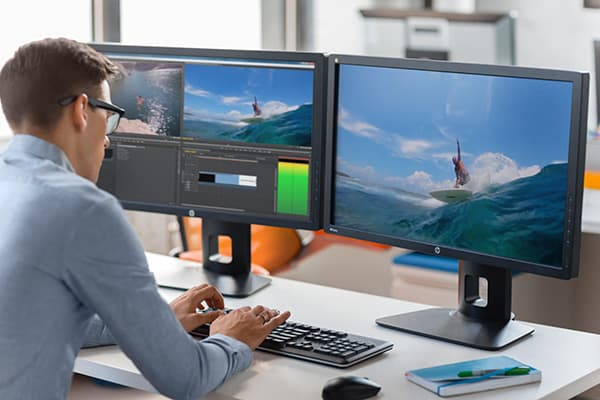
Although getting no signal to your new monitor can be cause for concern, it’s arguably the easiest problem to fix. It simply means that the display has power, but it isn’t receiving visual data. There are several reasons why this happens and plenty of fixes you can try to sort it out.
Force Windows to detect your monitor: Maybe Windows didn’t recognize your second display’s connection. To force it to check again, right-click the desktop and select Display Settings from the resulting pop-up menu. In the following window, click the Detect button located under the display diagram. In Windows 11, you can find this under the Multiple Displays section.
Turn the screen off and on: Some connection types don’t like hot swapping while a different monitor is powered on. Turn the display off and then on again. That may be all it needs to recognize the video feed and start displaying it correctly.
Verify cable connections: A loose cable can cause “no signal” errors more often than any other problem. If they do seem well secured, unplug them and plug them in again just to be sure.
Remove other peripheral devices: Disconnect any connected cameras or other unnecessary peripherals. If your display starts working afterward, these connections were probably interfering with your setup. You may need to find newer, compatible accessories or use connections on your PC instead of your monitor.
Verify the correct input: Monitors with multiple input options need you to manually select which cable and port you’re using, like HDMI 1, HDMI 2, DisplayPort 1.4, USB-C, and so on. Use the buttons on your monitor to cycle through the channels and select the correct input from your PC. If you are using an adapter to switch from one type of input to another, this may be causing issues with the other monitor. Try to remove the adapter if possible, or replace it with another adapter to see if this fixes the issue.
Change data cable: If you’re using an older cable standard like VGA or DVI-D, you might want to try a newer alternative like HDMI or DisplayPort. You can also try using a new cable in case the old one has issues (bent pins, a short, exposed wire, etc.).
Change the graphics port: If you’re using a dedicated graphics card with multiple output ports, try switching to another port. Sometimes ports themselves can go bad or somehow get damaged. Switching to another may be all you need to do to correct the problem.
Update your drivers: Windows supports multiple
If you’re still having trouble with your extended desktop monitor, verify that it works by unplugging the primary screen and double-checking the above steps again. If it does, consider running it as the primary display until you determine the root problem. If it doesn’t, contact your retailer or manufacturer to discuss a return or replacement.
Wrong or differing resolutions
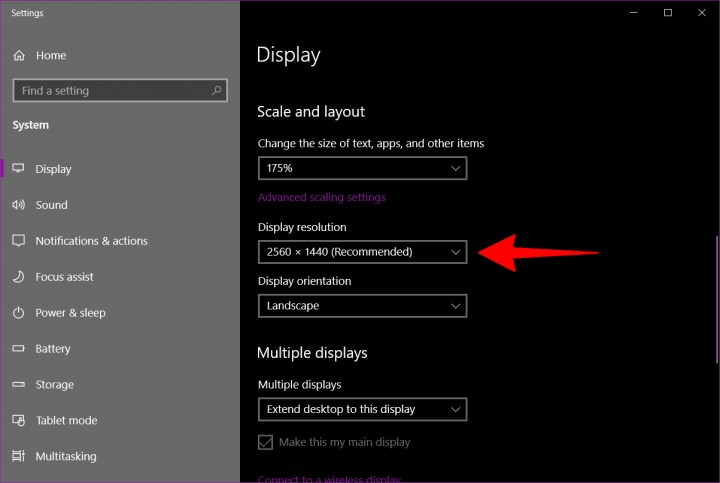
If you add a new, higher-resolution monitor to your system and find that it’s not displaying correctly, it might be borrowing settings from an older display, or simply trying to match your primary monitor.
Step 1: Right-click your desktop and select the Display Settings option on the resulting pop-up menu.
Step 2: The Settings app opens with the Display panel loaded by default. Click on the secondary display shown in the diagram.
Step 3: With your secondary screen highlighted, scroll down to Scale and Layout and click the drop-down menu located under Display Resolution.
Step 4: Select a screen resolution that works best for you. Windows designates one of these resolutions as “recommended” based on the display’s hardware.
If this didn’t work, make sure your monitor and
Note: You can use two
Wrong refresh rate
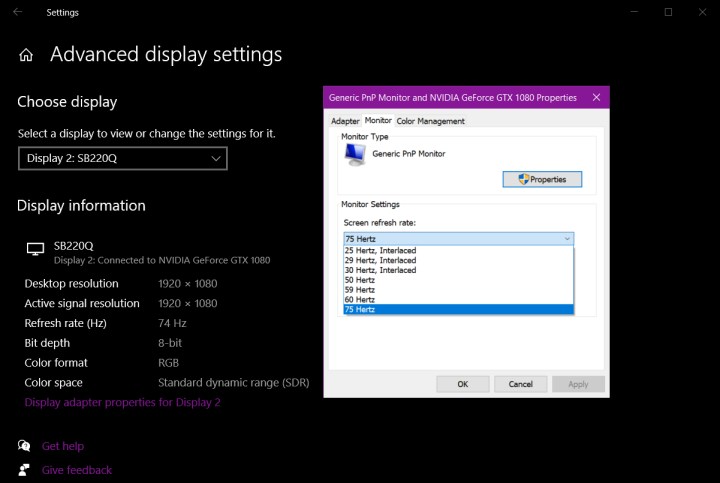
If your monitor is set at an incorrect refresh rate, it will display a “no signal” error. That means the PC is outputting a signal the display simply can’t handle, requiring you to manually adjust the output in Windows.
Step 1: Right-click your desktop and select the Display Settings option on the resulting pop-up menu.
Step 2: The Settings app opens with the Display panel loaded by default. Scroll down and click the Advanced Display Settings link located under Multiple Displays.
Step 3: On the following screen, click the drop-down menu located under Choose Display and select the problematic monitor.
Step 4: Under Display Information, click the Display Adapter Properties for Display # link.
Step 5: In the following pop-up window, click the Monitor tab.
Step 6: Under Monitor Settings, use the drop-down menu to select another refresh rate.
You can double-check what refresh rate your monitor is running at with the Testufo tool.
Other monitors have the wrong aspect ratio

When this happens, other
Review your resolution settings: Go through our resolution section above, and make sure that your resolution settings match each monitor you are using. Use recommended or screen-fitting options where possible.
Switch cables: If you have the option, try a different cable standard, like switching from DisplayPort to HDMI or vice-versa. When doing this, make sure the cables you are using support your current resolution — older cables may not support UHD/4K resolutions, which could cause this aspect ratio issue.
Are you using a TV as a second monitor?: If so, go into your TV settings and look for options to turn off the Overscan or Underscan setting. This may also be called a Relax mode. You may also want to make sure there are no Aspect Ratio modes accidentally enabled. Consult your TV manual for more information.
Check your display orientation: This isn’t as common, but the issue may be the monitor’s orientation. In Windows, go to the Display section and look for Display Orientation. Try switching the orientation to something like Portrait, then switch it back to Landscape and see if this helps.
Game displaying on the wrong monitor
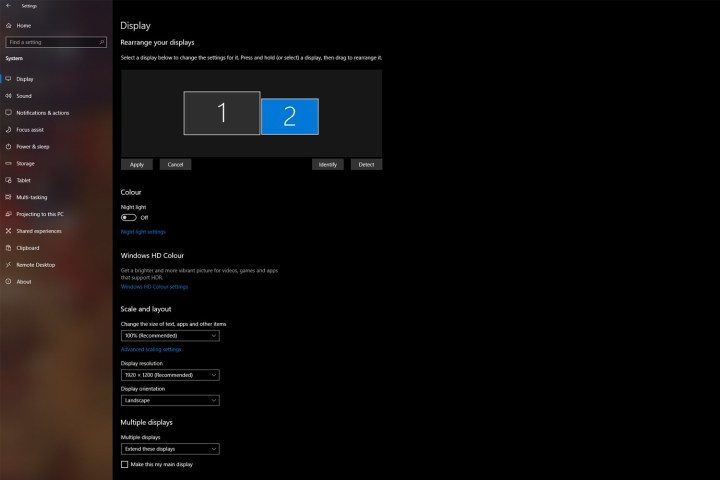
It’s not uncommon for games to display on your second monitor rather than your first, which isn’t ideal if you have a primary display for gaming and a secondary for everything else. Fortunately, there are some quick and easy ways to fix it.
- Use in-game settings: The easiest way is often to just tell the game to display on your primary monitor. Some games have the option of selecting a display in their settings menu, so check there first before adjusting anything else.
- Check your display outputs: If you find that this isn’t the first time a game or application has displayed on the wrong monitor, you might want to check your inputs. Is your secondary display plugged into the primary display output on your graphics card? Try swapping them around to see if that fixes things.
- Make it your primary display: Press Windows Key + I to open the Settings menu, then navigate to System > Display. Select the monitor you want your games to appear on, and select the box next to Make this my primary display.
- Only use one monitor: If the above doesn’t work, in Display settings, select the display you want to game on. From the Monitor Settings (Windows 11) or Multiple Displays (Windows 10) drop-down, select Show only on 1 or Show only on 2 as appropriate. You will need to turn this back off once you’ve finished gaming, but it is a surefire way to get your game working on the right display.
Duplicate or extended images
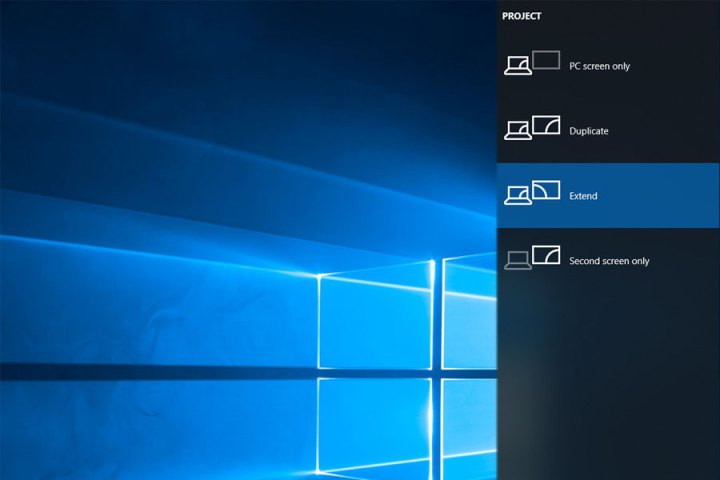
There are a few different ways to display content on two screens, but Duplicate is often the default. If your second display merely copies the desktop rather than extends it, here’s how to change that view.
Step 1: Press the Windows + P keys to load the Project menu.
Step 2: Select the Extend option. You can do this by using your mouse, going up or down with the arrow keys and pressing Enter, or by pressing the Windows + P keys to cycle through options.
Alternatively, you can take the long route:
Step 1: Right-click your desktop and select the Display Settings option on the resulting pop-up menu.
Step 2: The Settings app opens with the Display panel loaded by default. Select your secondary monitor shown in the diagram.
Step 3: With your second screen highlighted, scroll down to Multiple Displays and select Extend Desktop to This Display on the drop-down menu.
Step 4: Go back up to the diagram and use your mouse to drag your second monitor to the left or right of your primary screen.
These same processes can be used to change to duplicate if you’d prefer it that way.
One monitor keeps going off and on

If one of your
Check your power cable: Try checking the power cable to make sure it’s plugged in properly. Check both ends too. Just because it’s plugged into the monitor correctly, doesn’t mean it hasn’t come loose from the wall socket.
Check the data cable: Whether it’s HDMI, DisplayPort, USB-C, or an older legacy connector, make sure it’s plugged in securely. If in doubt, unplug it and replug it in again. Check the end that’s plugged into your computer, too.
Swap cables: If you have alternate cables you can try, swap them out to see if that fixes the problem. Also consider swapping the power strip for another one, or plugging straight into the wall if you can.
Change ports: Try a different port on the monitor and on your computer. If the port is defective, it could produce these sorts of connection issues.
Color on one monitor is incorrect compared to the others
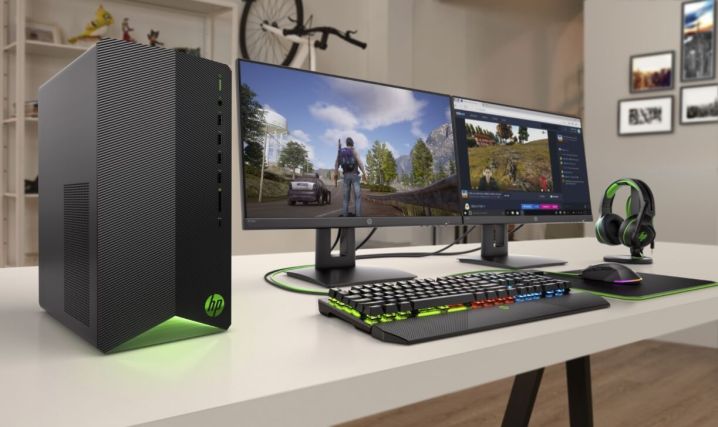
This can be an issue for designers and artists who find that one of the
Step 1: Unfortunately, there isn’t always an easy fix. If color accuracy and similar factors are important to you, the best way to guarantee them is to get two of the same monitor models. You may need to replace the poor-performance monitor with a copy of your primary monitor with stronger color accuracy.
Step 2: If replacement isn’t an option, you can work to calibrate the poor-performing monitor to fix color issues and get it working properly. Bring up the same image on both
Two monitors can connect, but not the third

If you’re working with a three-monitor setup, you may find that the first two
Unplug
Make sure that your settings are on Extend these displays: In the Multiple displays sections of Displays on Windows, make sure the Extend these displays option is chosen. It’s a good idea to check all your Display settings to make sure they are set up for multiple
Check to make sure all graphics drivers are updated: Follow this guide on how to update your graphics drivers, and restart if necessary.
Games keep minimizing
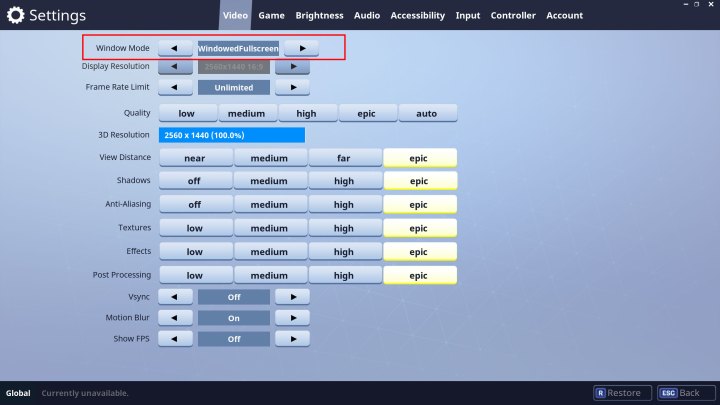
If you find that your games keep minimizing when playing on a single monitor, you might be accidentally clicking in the pane of your second display. Some games don’t lock the boundaries of their fullscreen window, which means that when you move to the edge of the screen, your pointer can transition into the second window.
Clicking selects that second monitor, or whatever is on it, minimizing the game. This is particularly problematic in games without a mouse pointer, like first-person shooters. Here are a few methods for fixing the minimization problem:
Check your display options within the game itself: If you’re playing in “Windowed” mode, try switching to “Full Screen” instead, as it captures your mouse. If that doesn’t work, try switching to the “Borderless Window” mode. It won’t stop your mouse from moving to the other screen, but it can stop the game from minimizing when it happens. You’ll just need to click back into the game window.
Use a third-party app: Applications like the Dual Monitor Tool can let you lock a mouse pointer to a specific monitor. Just remember to unlock the mouse when you’re done.
Now that your multiple
Apps and tabs keep getting shuffled around
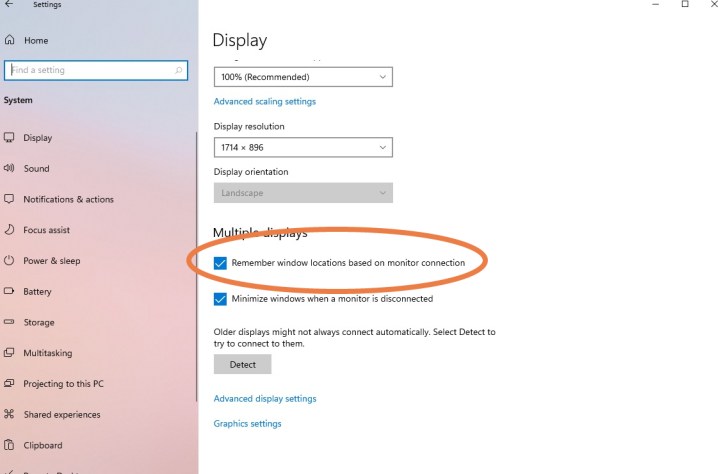
This can happen if you go into sleep mode or your
Update to
Switch off DisplayPort: You can also switch from DisplayPort to HDMI. This problem appears to be unique to DisplayPort connections, and you may be able to prevent it from happening by using another connection option.
Distortion and artifacts
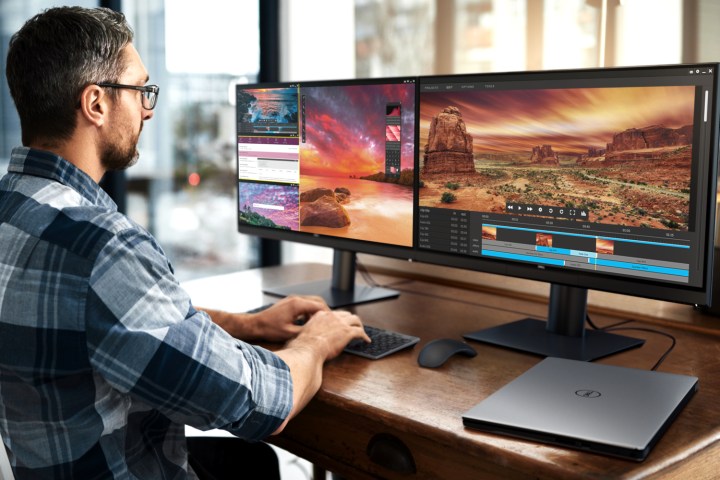
Sometimes your secondary computer monitor will work, but it will encounter distortions and artifacting that make it difficult to use or impossible to play games with. If your first monitor does not have these display issues, then the issue is probably related to your hardware. You can usually fix it by trying these steps:
Check monitor ports: Make sure all ports on your computer are clean and dust-free. If it’s been a while, clean them out very carefully with a few jets of compressed air and make sure there is no damage or debris to the port or cable.
Buy a new monitor cable for the secondary monitor: It may be that your cable is old and failing. This is especially true if it isn’t shielded and is experiencing interference from Wi-Fi, Bluetooth, and nearby electrical noise. Find a new cable that has great shielding.
Shorten the cable length: If possible, pick a new cable that’s shorter than the older one. The longer data has to travel through the cable, the more chance of interference, so a shorter cable can cut down on artifacting and similar problems.
If you are using switch converters or adapters, try connecting without them: Look for cables that don’t need separate adapters or switches to control.
Display hub limitations

Chances are your dual- or triple-monitor workstation is routed through some type of multi-port display hub. Brands like Satechi, Targus, and Ugreen are just a few companies that make these peripherals.
Many of the best display hubs can output up to an 8K signal with a high refresh rate, using connections like HDMI, DisplayPort, and USB-C, while a majority of these devices will at least deliver
If you’re having trouble getting video to a second or third monitor, it’s a good idea to check the specs of your display hub. Your computer’s OS, and your monitors’ resolution and refresh rate caps, are factors that will affect the ins and outs of how you should wire your display hub.
Display hubs themselves will also have display limitations. For instance, dual-screen output at
Additional monitors suddenly stop working

In this case, you have been using a multi-monitor setup for a while now and everything has been working fine — but suddenly your other
Check your connections: Cover the basics, and make sure your other monitor is still properly connected and that cables haven’t come loose since you last booted up.
Give Windows a reminder: Sometimes Windows stumbles a little and sort of loses track of your additional
Restart everything: Shut down Windows and all your
If necessary, roll back driver updates: If your display driver recently updated, it could be causing the issue. Go to Device Manager, select Display Adapters, and select your display adapter to see more. Go to Properties, look at the Driver tab, and choose Roll Back Driver.
Images don’t align on monitors of different size
If you have different size
The most direct way to deal with this is to adjust a monitor’s resolution scaling. You can either adjust one monitor to bring everything into scale or set the same scale for both
Divide the vertical pixels per diagonal inch of both
Editors' Recommendations
- How to keep your laptop battery healthy and extend its life
- The most common Zoom problems and how to fix them
- What is an RSS feed? Here’s why you should still use one
- How to open RAR files on Windows and Mac
- How to keep your MacBook from sleeping





